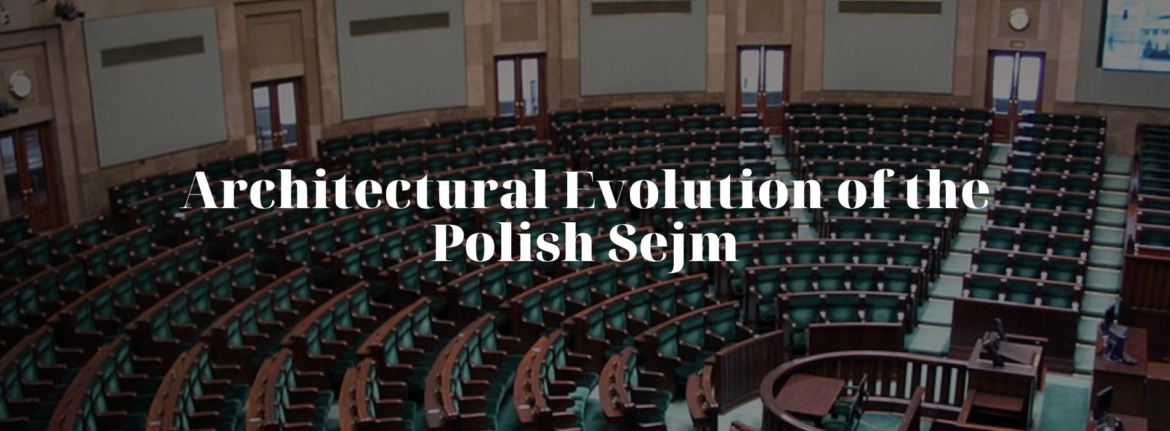The architecture of the Polish Sejm (Parliament) is a rich tapestry that weaves together the history and modernity of Poland’s political landscape. From its roots in the Kingdom of Poland to the contemporary Sejm complex in Warsaw, each phase of architectural development reflects the changing eras of Polish governance.
The Historical Foundations
The Sejm’s origins trace back to the King’s Councils, known as wiece, which gained authority during Poland’s period of fragmentation (1146-1295). The first significant Sejm took place in Łęczyca in 1180, marking the beginning of a tradition that would evolve into a bicameral parliamentary system. Over the centuries, the influence of the Sejm grew, especially with the nobility becoming a dominant force in Polish politics.
Architectural Evolution in the Interwar Period
The modern architecture of the Sejm complex began to take shape in the early 20th century. In 1925, architect Kazimierz Skórewicz was commissioned to expand the parliament building, leading to the construction of the amphitheater Meeting Room and a four-story Deputy’s House, today known as the Old House. This period also saw the inauguration of the new Meeting Room in 1928, where the April Constitution was adopted in 1935.
World War II and Post-War Reconstruction
World War II brought destruction to parts of the Sejm buildings. Post-war reconstruction efforts in 1946-1947 involved the rebuilding of the burned Meeting Room and the demolition of the remaining nineteenth-century structures. The first sitting of the post-war Sejm occurred in 1947, and the constitution of the Polish People’s Republic was adopted in 1952.
Modern Expansion and Adaptation
The Sejm complex underwent significant architectural changes in the latter half of the 20th century. Notable Polish architect Bohdan Pniewski won a competition in 1946 for the extension of the Sejm complex. The main work, completed in 1952, harmoniously integrated the new structures with the old park surroundings. The New House for Members of the Sejm, built in 1989, was designed by Małgorzata Handzelewicz-Wacławek and Andrzej Kaliszewski. This period also saw the adaptation of a former library building for the Senate Meeting Hall, marked by its iconic oval staircase.
Architectural Highlights of the Sejm Complex
Meeting Hall: An artistic representation of Polish values and history, adorned with a frieze of eighteen stone plates with bas-reliefs symbolizing various themes like Liberation, craft, religion, and education.
Marshal Corridor: This corridor links different parts of the complex and is adorned with columns and plaques commemorating notable historical figures.
Column Hall: Known for its symmetrical columns and marble floor, this hall is used for Senate meetings.
Sejm Chapel: Dedicated to the Virgin Mary, this chapel includes an altar and statues illustrating the Stations of the Cross, and it also houses the chair used by Pope John Paul II during his visit to the Sejm in 1999.
Conclusion
The Sejm complex is not just a place for political deliberation; it is a living museum that encapsulates Poland’s tumultuous history and its journey towards modern statehood. The architecture of the Sejm complex, from its historical foundations to its modern adaptations, mirrors the evolving ethos of Polish society and governance.
